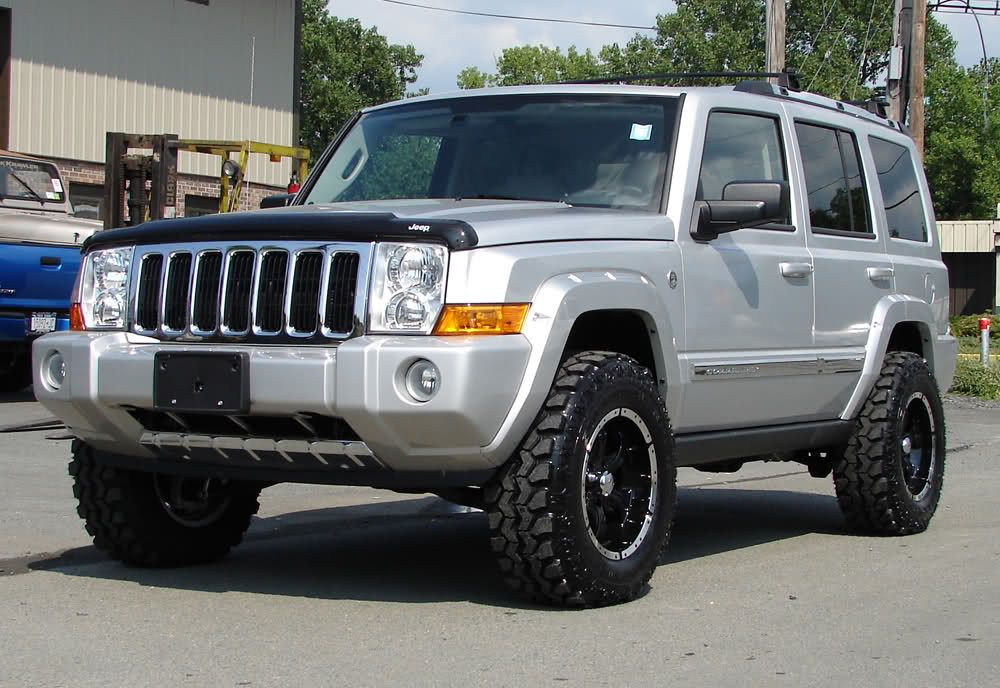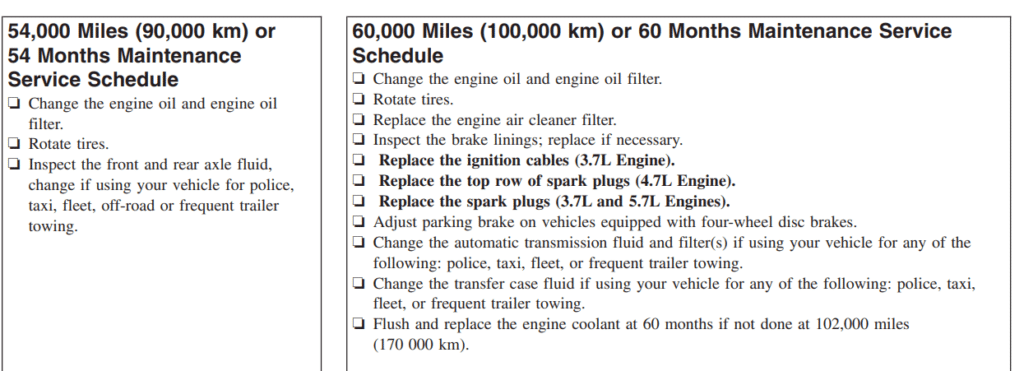In the world of off-roading and adventure, the Jeep Commander has carved a niche for itself as a reliable and robust vehicle. Among the many facets of its robustness is the well-engineered transmission system that ensures seamless gear changes and a smooth ride. A key player in this system is the transmission fluid, a topic we will comprehensively address in this article.
The transmission system of the Jeep Commander, with its fluid dynamics and mechanical magic, ensures seamless gear changes and a smooth ride, whether you’re conquering rocky terrains or cruising down the freeway. But like every finely tuned orchestra, each component has a part to play, and here, the unsung hero is the transmission fluid.
This humble fluid is a lifeline for your vehicle’s transmission system and plays a vital role in keeping your Jeep running smoothly and efficiently.
2006-2010 Jeep Commander Transmission Fluid Capacity And Transmission Fluid Type
The amount of transmission fluid that your Jeep Commander holds, also known as its transmission fluid capacity, is another crucial piece of information for optimal vehicle performance. Insufficient fluid can lead to overheating and wear, while an excess can cause erratic shifting or leakage.

The transmission fluid capacity for a Jeep Commander can vary depending on the model and the year of the vehicle. However, generally speaking, during a regular transmission service where the fluid is drained and refilled, you would require about 5 to 7 quarts of Mopar ATF+4.
| Gearbox | Fluid capacity |
|---|---|
| 4WD 5-speed 545RFE automtic | Total fill: 14.1 quarts (13.3 liters) Initial fill: 6.1 quarts (5.8 liters) |
| RWD 5-speed 545RFE automatic | Total fill: 14.1 quarts (13.3 liters) Initial fill: 5.5 quarts (5.2 liters) |
| 5-speed W5A580 automatic | Total fill: 8.1 quarts (7.6 liters) Initial fill: 5.3 quarts (5 liters) |
Jeep recommends using MOPAR ATF+4 or equivalent for the Jeep Commander. The ATF+4 is a synthetic fluid specially engineered for Chrysler, Dodge, Jeep, and Ram vehicles, and it is a high-quality lubricant that provides optimal protection for your transmission system. It offers excellent thermal and oxidative stability, which helps resist the formation of sludge and varnish that can impair the smooth operation of your transmission.
- For best performance, follow the manufacturer’s recommendations in your vehicle owner’s manual.
- Genuine OEM Dodge/Mopar factory fit part
The ATF+4 fluid also has superb low-temperature fluidity, which ensures faster lubrication of transmission components when starting your vehicle in cold weather. This feature reduces wear and tear during startups, contributing to the overall lifespan of the transmission system.
While there might be other transmission fluids available in the market, using a different type from the one recommended by the manufacturer could lead to sub-optimal performance and potential damage. Always consult your owner’s manual or a professional mechanic if you’re unsure about the type of transmission fluid to use.
The Jeep Commander, a symbol of strength and dependability, is typically fitted with an automatic transmission system. This system stands as the veritable heart of the vehicle, delivering power from the engine to the wheels, thereby orchestrating the vehicle’s motion.
The automatic transmission in a Jeep Commander is an intricate assembly of gears, clutches, and converters, all working in perfect synchrony. It automates the process of gear changing, selecting the optimum gear ratio for any given driving condition without the need for manual intervention. Whether you’re surmounting a steep hill or navigating through bustling city streets, your Jeep Commander’s transmission ensures that your vehicle is in the right gear, providing a perfect blend of power and fuel economy.
The most crucial component ensuring the smooth operation of this automatic transmission is the transmission fluid. This special fluid provides lubrication to the complex network of gears and other moving parts, preventing wear and tear. It also acts as a coolant, reducing the heat generated by the friction between these components. Additionally, it serves as a hydraulic medium, enabling the smooth shifting of gears.
The kind of transmission fluid used, its capacity, and the frequency of change all have a significant impact on the performance and longevity of your Jeep Commander’s transmission system.
Understanding these aspects will not only help in maintaining the health of your Jeep’s transmission but also contribute to a smoother and more responsive driving experience.
Importance of Transmission Fluid
Transmission fluid is a vital component of any vehicle, but its importance often goes underappreciated. In reality, it’s the lifeblood of your Jeep Commander’s transmission system, carrying out numerous functions that ensure the system’s smooth operation and longevity.
One of the primary roles of the transmission fluid is lubrication. The transmission system of your Jeep Commander comprises several moving parts, including gears, bearings, and clutches. The fluid lubricates these parts, reducing friction and preventing wear and tear. By doing so, it increases the lifespan of the components and ensures the transmission system operates smoothly.
The transmission fluid also serves a critical role in heat dissipation. The rapid and continuous movement of parts within the transmission generates a considerable amount of heat. If not effectively managed, this heat can lead to overheating and potential failure of the transmission system. The fluid helps absorb this heat and carry it away from the transmission components, thereby maintaining an optimal operating temperature and preventing heat-related damage.
Additionally, the transmission fluid in your Jeep Commander acts as a hydraulic fluid. It is used to apply pressure within the transmission, thereby enabling the shifting of gears. This pressure also aids in the engagement and disengagement of the clutches and brakes, ensuring precise control over the power flow within the transmission.
The fluid also helps clean the transmission by trapping and holding various contaminants and wear materials. Over time, the fluid can become saturated with these particles, reducing its effectiveness and potentially causing damage to the transmission. This is why it’s crucial to change your transmission fluid at regular intervals.
How Often to Change the Transmission Fluid In Jeep Commander
Keeping your Jeep Commander’s transmission fluid fresh and at the appropriate level is essential for the longevity and performance of your vehicle. But how often should you change the transmission fluid?
Typically, for most vehicles, manufacturers recommend changing the transmission fluid approximately every 60,000 to 100,000 miles. However, these numbers can vary depending on several factors, including the type of vehicle, driving conditions, and the fluid’s condition.
For Jeep Commander owners, you should always refer to your owner’s manual for the manufacturer’s specific recommendations. However, in general terms, if you’re using your Commander for regular commuting under normal conditions, adhering to the 60,000 to 100,000 miles range should suffice.

But remember, if you use your Commander for more heavy-duty tasks such as towing, off-roading, or driving in severe weather or stop-and-go traffic, the transmission fluid may degrade faster. In such cases, a more frequent fluid change – around every 50,000 miles – might be needed.
Regularly checking the color and smell of your transmission fluid can also give you a sense of its condition. Fresh transmission fluid is typically a bright red color and has a slightly sweet smell. If the fluid turns brown or has a burnt smell, it’s a sign that the fluid has degraded and needs to be replaced, regardless of mileage.
How to Change the Transmission Fluid
Changing the transmission fluid of your Jeep Commander can be a do-it-yourself task for those with the right tools and a good understanding of their vehicle’s mechanics. However, it can be a messy process, and if done incorrectly, it can lead to transmission problems. Here’s a general step-by-step guide for those willing to undertake the task.
Please note that the procedure can vary based on the specific model and year of your Jeep Commander:
- Gather the necessary tools and supplies: This includes the recommended ATF+4 transmission fluid, a catch pan for the old fluid, a transmission filter and gasket if necessary, and basic hand tools.
- Warm up the vehicle: Start your Jeep and let it run for a few minutes. This warms up the transmission fluid, allowing it to drain more effectively.
- Drain the old fluid: Position your catch pan under the transmission pan and remove the drain plug, or if no plug is present, unbolt the transmission pan itself. Be careful, as the fluid may be hot. Allow all the old fluid to drain into the pan.
- Remove and clean the transmission pan: If you unbolted the transmission pan, remove it completely and clean it out. Be sure to remove any old gasket material if you’re replacing the gasket.
- Replace the filter: If your Jeep Commander has a replaceable transmission filter, now is a good time to replace it. The filter helps to catch any impurities in the fluid, protecting your transmission from potential damage.
- Reinstall the pan and plug: Using a new gasket if necessary, reinstall the transmission pan, and tighten the plug or bolts to the manufacturer’s specified torque.
- Refill with new fluid: Through the transmission dipstick tube, add the new ATF+4 fluid. Do not overfill it. The exact quantity should be in your vehicle’s manual.
- Check the fluid level: Start your vehicle and let it run for a few minutes to circulate the new fluid. With the engine still running, pull out the dipstick, wipe it clean, reinsert it, and then pull it out again to check the level. If it’s below the “full” mark, add more fluid.
- Test drive and recheck: After everything is done, take your Jeep for a short drive to help circulate the fluid. Check the fluid level one more time and look for leaks. If everything checks out, the job is done.
This process can be quite involved, and if done incorrectly, can cause transmission damage. If you’re unsure or uncomfortable performing this task, it’s best to leave it to professional mechanics. Up next, we’ll discuss how to recognize the symptoms of low transmission fluid.
Symptoms of Low Transmission Fluid
Maintaining the correct level of transmission fluid in your Jeep Commander is critical for the health and performance of the transmission system. Running your vehicle with low transmission fluid can cause damage and may result in expensive repairs. Knowing the symptoms of low transmission fluid can help prevent these issues. Here are some common signs:
- Delayed Gear Engagement: If you notice a delay before the vehicle starts moving after shifting from park to drive or reverse, this could be a sign of low transmission fluid.
- Difficulty Shifting Gears: If the transmission fluid is low, you might experience hard or erratic shifts. This is because the transmission fluid acts as a hydraulic fluid, enabling gear shifts.
- Transmission Overheating: The transmission fluid plays a crucial role in cooling the transmission. If the fluid level is low, it may not be able to carry away enough heat, causing the transmission to overheat. Your vehicle may alert you to this with a transmission temperature warning light.
- Transmission Slipping: Low transmission fluid can also cause your transmission to slip, which means the vehicle may change gears for no apparent reason.
- Noisy Transmission: If you hear whining or humming noises coming from your transmission, it may be due to low fluid levels.
- Transmission Fluid Leaks: If you find a red fluid under your vehicle, it might be a sign of a transmission fluid leak.
If you notice any of these symptoms, it’s essential to check the transmission fluid level and condition in your Jeep Commander. If the fluid is low or appears dirty or burnt, it may need to be topped up or changed. It’s also important to investigate and fix any leaks to prevent the problem from recurring.
Remember, when it comes to the health of your vehicle, prevention is always better than cure. Regular maintenance and timely attention to potential issues will help ensure a long and reliable life for your Jeep Commander.
Last update on 2025-12-21 / Affiliate links / Images from Amazon Product Advertising API
















